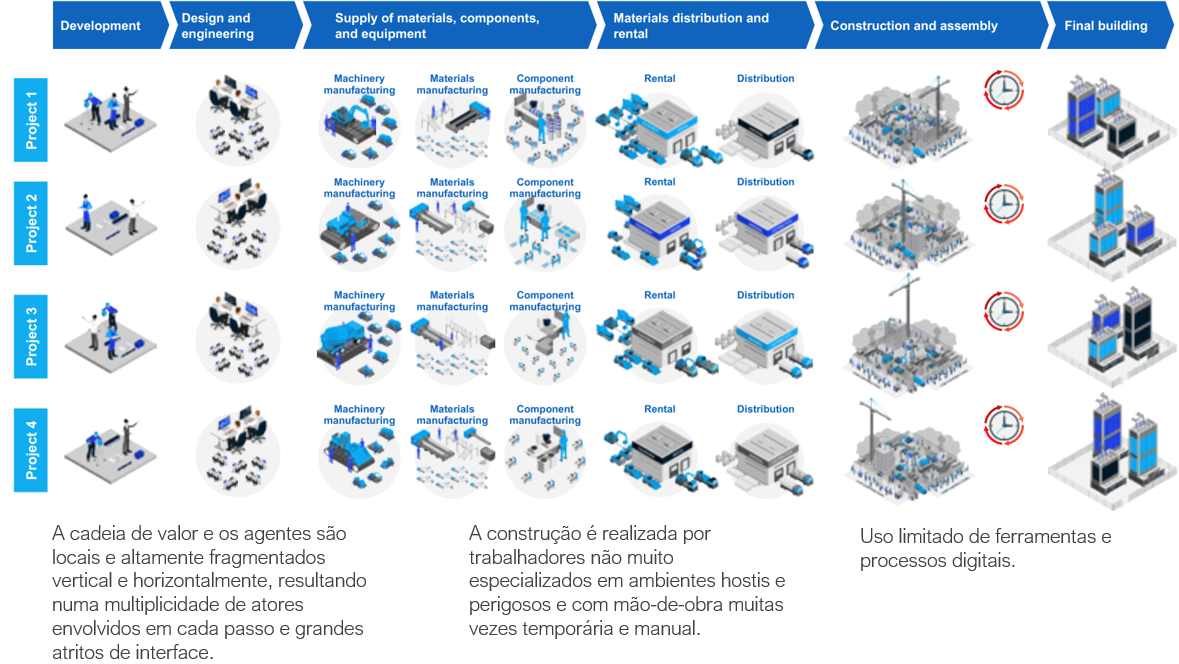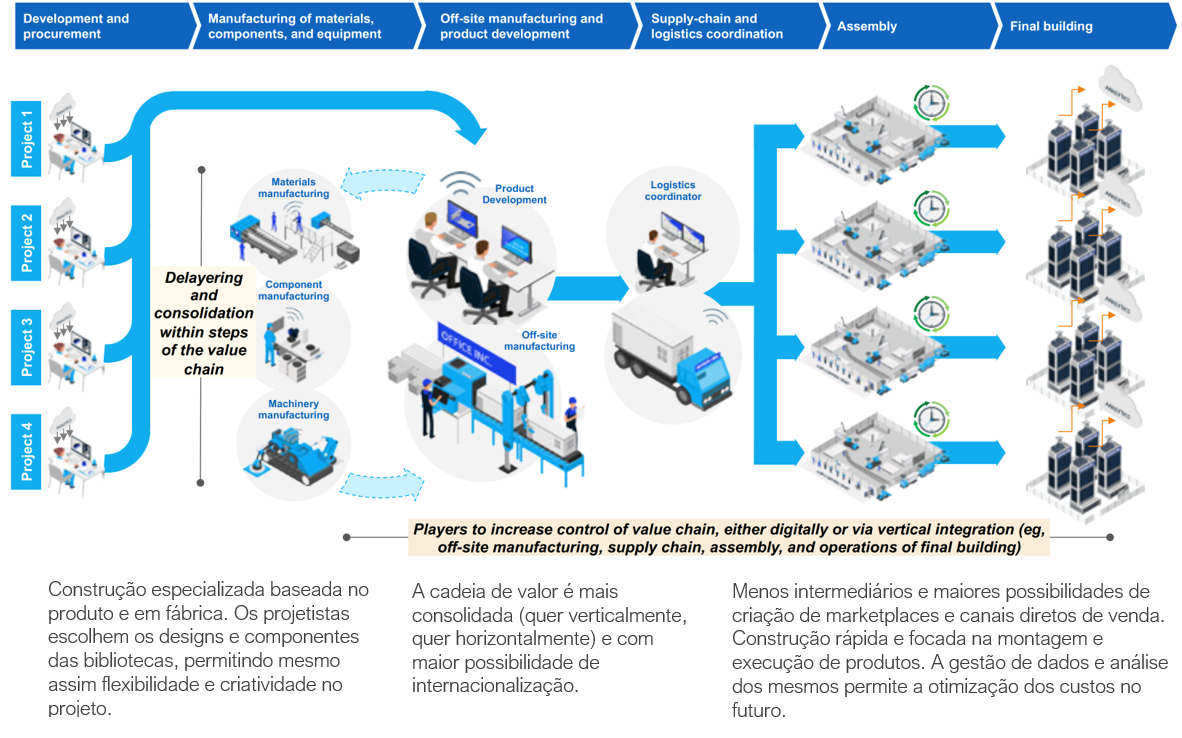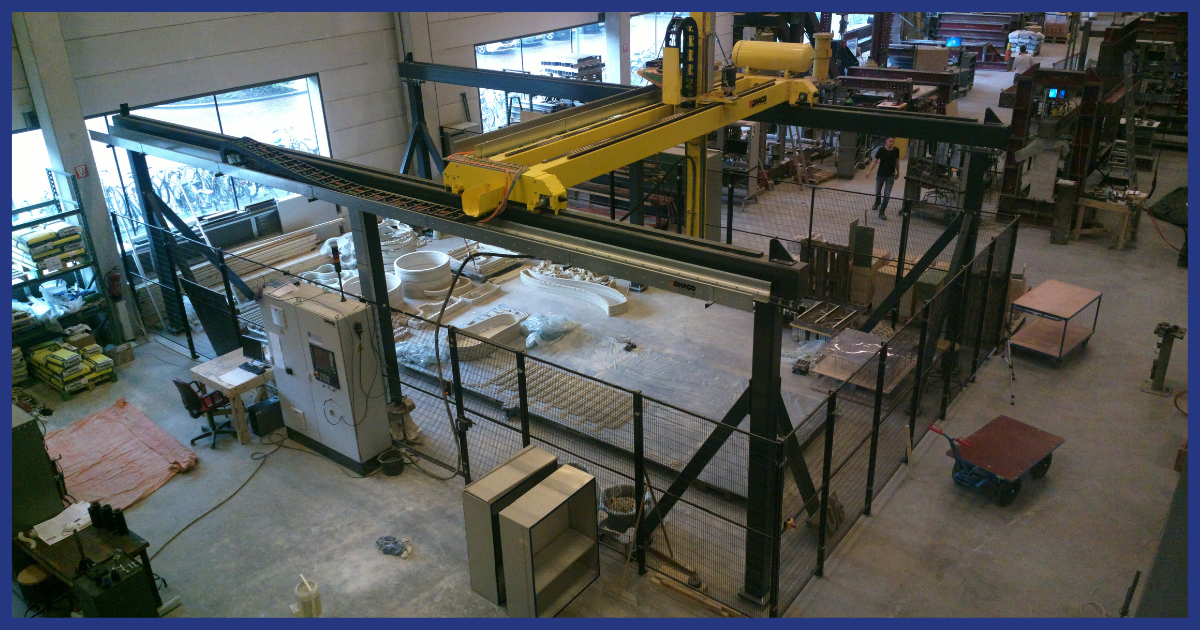By João Moutinho Business Director BUILT CoLAB
How should the construction industry react to meet the challenges of a more digital, more sustainable, more competitive society with less available labor?
Construction, which encompasses buildings, infrastructure and industrial structures, is the largest industry in the global economy, representing 13% of world GDP (McKinsey, 2020).
Companies that can adjust their business models will thrive, others that do not will find it very difficult to survive.
The challenges:
– Over the past two decades construction has been characterized by relatively poor performance. Annual productivity growth over the past 20 years has been only a third of the total economy average. Risk aversion and fragmentation, as well as difficulties in attracting digital talent, have slowed innovation. Digitalization is lower than in almost all other industries. Customer satisfaction is hampered by frequent overruns of deadlines and budgets, lengthy complaint procedures, and a relatively negative image on the part of construction owners;
– The shortage of skilled labor has become one of the biggest challenges in construction. This is partly due to the exodus of workers to other European countries, and will worsen in the future as a significant proportion of the most skilled construction workers will retire in the coming years. However, several diagnoses also identify that there is a low attractiveness of workers for some of the activities inherent in construction, particularly those related to work on construction sites. Studies conducted by sector associations already identify a need for more than 70,000 workers for this sector in Portugal alone. The use of immersive VR/AR technologies, in virtual and real context, enables new, more efficient and attractive ways to empower the workforce and allow remote training/assistance scenarios either in factory (production) or on site (assembly);
– Requirements for workplace safety and sustainability are increasingly demanding. Following COVID-19, new health and safety procedures will be required. European and World authorities, due to climate change, will increasingly put pressure on the construction industry to reduce emissions (especially considering that construction is responsible for more than 40% of all emissions);
– Industrialization of construction will be the new normal. Modularization, automation of off-site production and automation of on-site assembly will enable industrialization and a more industrial, product-based approach. The shift to a more controlled environment will be even more valuable considering the learnings that happened with COVID-19 and how the world has gone more “digital.” The next step in the transition to efficient offsite production is to integrate automated production systems, essentially making construction more analogous to automotive manufacturing. Robots will have to factory produce these new modular products (in concrete, metal, geocomposites or other materials), finish them, check their conformity, and then even assemble them on site. Estimates point to a decrease in construction time of between 20 and 50 percent (McKinsey 2019). It is also significantly more economical to produce in a factory (controlled environment, better working conditions, and less difficulty in raising labor) and to assemble only on site. Estimates show a 20% reduction in cost (McKinsey 2019). Less “rework”, less logistics costs, less waste and higher labor productivity. This paradigm shift is necessary and generates better quality buildings at lower cost and with greater environmental sustainability. Accompanying all of this will be software needs that facilitate “design for assembly”, that create the modules, that prepare manufacturing, that use artificial intelligence to make everything more efficient, and next generation communication networks to cooperate, communicate and generate data. From this data, value will be extracted for production, assembly, and even marketing, just as has been done for decades in the automotive industry;
– Innovations in traditional basic materials such as cement will be one of the biggest challenges, as they will have to allow a reduction in the carbon footprint. Lighter, more flexible materials can allow simpler production of modules in the factory and will contribute to easier logistics, allowing long-haul transportation of materials. The mechanical characteristics of materials will also be of crucial importance for new manufacturing methods (e.g. additive manufacturing) and for thermal and acoustic performance in buildings, for example;
– The digitalization of products and processes is a necessary step that is already overdue in the construction sector. Digital technologies can enable better collaboration, greater control of the value chain, and a shift to more data-driven decision making. These innovations will change the way companies approach operations, design and construction, and engagement with partners. Smart buildings and infrastructure that integrate the Internet of Things (IoT) will increase data availability and enable more efficient operations, as well as new business models, such as contracting based on innovation and performance metrics (structural, green, etc.). Companies can improve efficiency and integrate the design phase with the rest of the value chain by using building information modeling (BIM) to create a complete three-dimensional model (a “digital twin”) and add more layers such as planning, cost, sustainability and others.
Figure 1 illustrates the current ecosystem and Figure 2 presents the new paradigm. By comparison, it is possible to see how the industrialization of construction will have to be the new normal.


How construction addresses these challenges will define the success of this sector. The industrialization of construction (factory production and on-site assembly, for example) will minimize most of the problems: greater efficiency, greater competitiveness, better working conditions (comfort, hygiene and safety), more attractive functions to workers, easier logistics, lower emissions and greater control over the environmental sustainability of processes, more integration and proximity to supply chains, and easier and more efficient digital transition.
BUILT CoLAB © 2021

